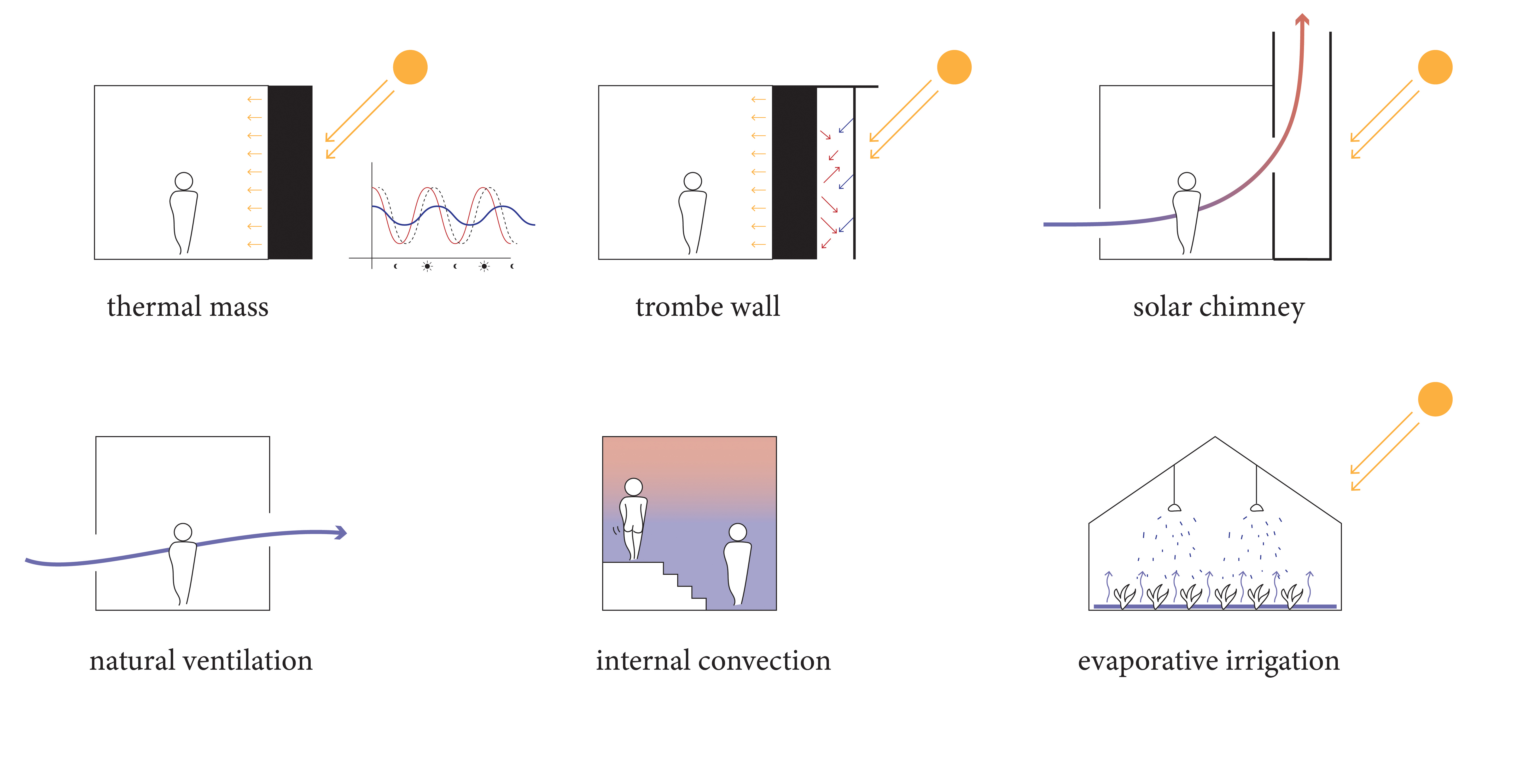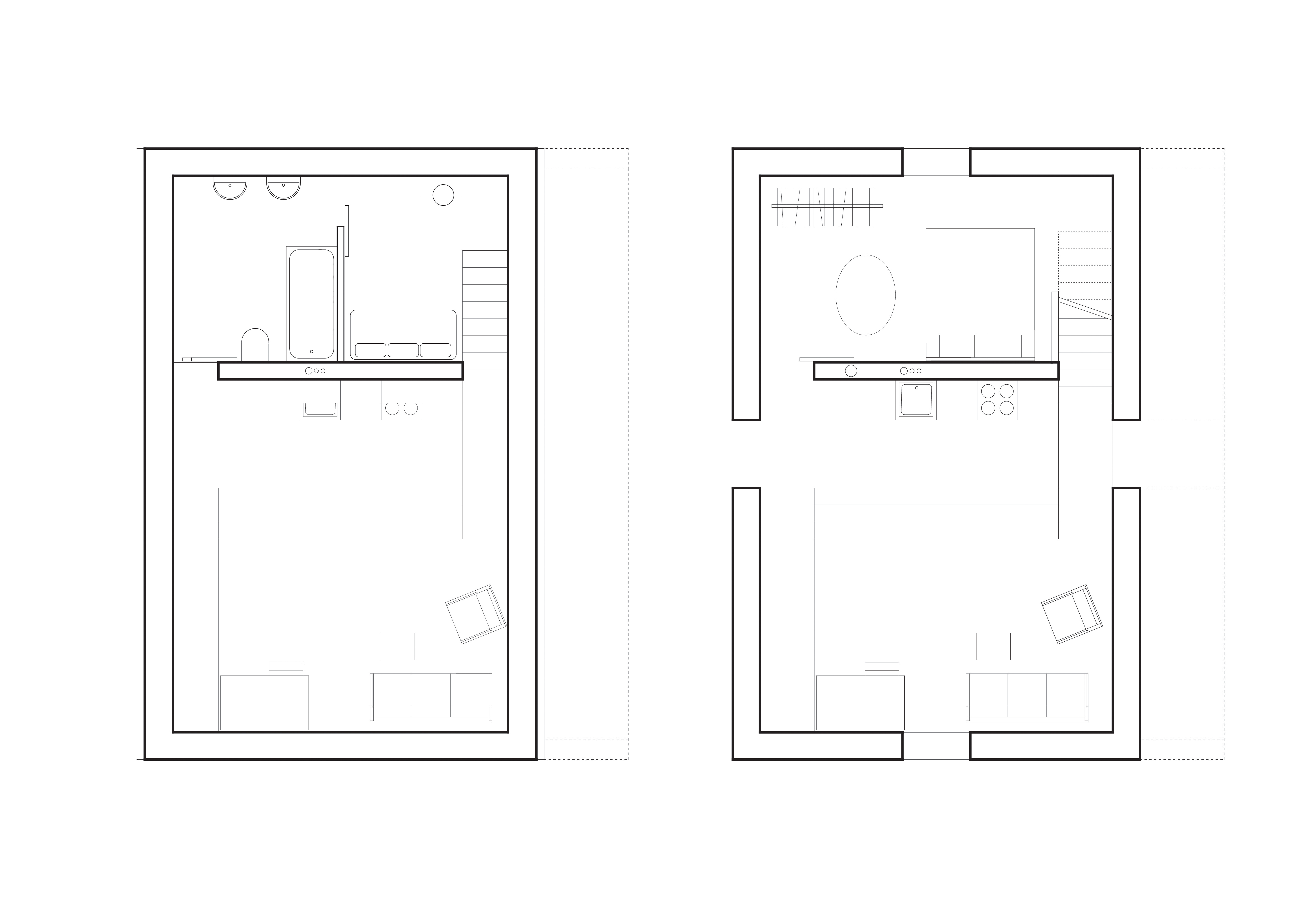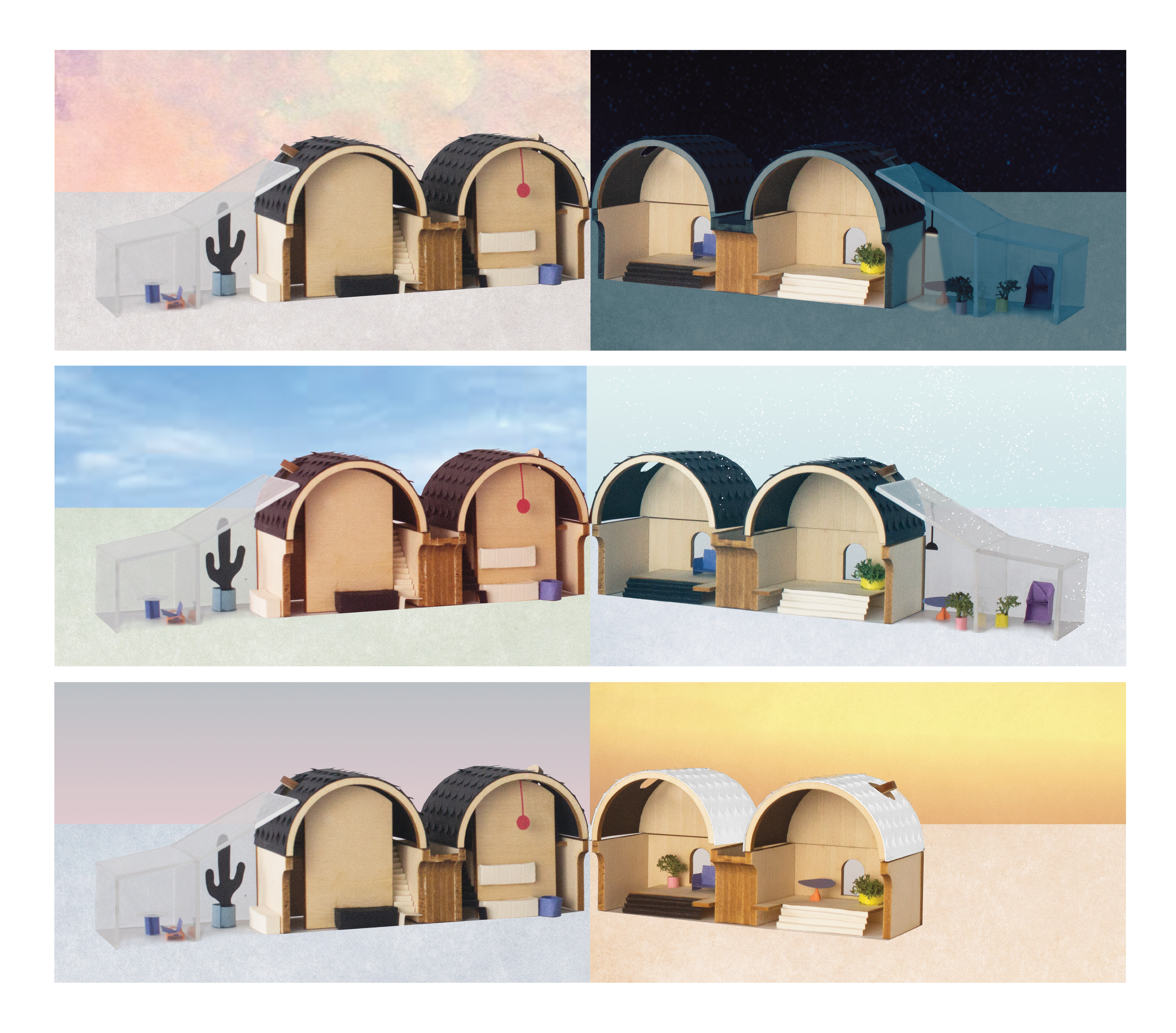High Time for Low Tech
︎ Tags: GSAPP, models, 2019
Columbia GSAPP Fall 2019
Critic: David Benjamin

”High Time for Low Tech” tackles Mid to low-density areas in the U.S. that are prone to be in desert-like conditions by the end of the century by choosing an adaptation+mitigation approach. The project aims to cut household energy consumption in half by mid-century by eliminating the need for mechanical heating and cooling. It is focussed on Low-tech principles and their adaptability to the somewhat unpredictably changing climate.
The design proposal includes two low tech housing prototypes: a two family home and a mid-rise apartment building.
Both structures are made from bricks as a human scale low tech material. As technology advances kiln fired bricks can be replaced by grown bricks or mud bricks. Both prototypes make use of existing thermodynamic concepts - partly informed by vernacular architecture - but frame them in a future-oriented, adaptable way.
As the climate changes and the air gets hotter and dryer growing crops outdoors with limited water supply will become more and more challenging. At the same time winters will be warmer and the need for a heating buffer layer disappears. Consequently buildings can strip their buffer layers and they can be turned into greenhouses for agriculture in which water can be recycled through evaporation. As buffer layers are detached, activities like cooking move towards the center of the structure. This transformation is simultaneously allowing for more independence from possibly scarce food sources in the future.
While this large wave of new low tech public housing is being built, it can inform the way we think about retrofitting - instead of plastering buildings with ecologically questionable insulation foams we should be considering all low tech solutions presented (adding solar chimneys, more thermal mass, buffer layers etc.)
The design proposal includes two low tech housing prototypes: a two family home and a mid-rise apartment building.
Both structures are made from bricks as a human scale low tech material. As technology advances kiln fired bricks can be replaced by grown bricks or mud bricks. Both prototypes make use of existing thermodynamic concepts - partly informed by vernacular architecture - but frame them in a future-oriented, adaptable way.
As the climate changes and the air gets hotter and dryer growing crops outdoors with limited water supply will become more and more challenging. At the same time winters will be warmer and the need for a heating buffer layer disappears. Consequently buildings can strip their buffer layers and they can be turned into greenhouses for agriculture in which water can be recycled through evaporation. As buffer layers are detached, activities like cooking move towards the center of the structure. This transformation is simultaneously allowing for more independence from possibly scarce food sources in the future.
While this large wave of new low tech public housing is being built, it can inform the way we think about retrofitting - instead of plastering buildings with ecologically questionable insulation foams we should be considering all low tech solutions presented (adding solar chimneys, more thermal mass, buffer layers etc.)






